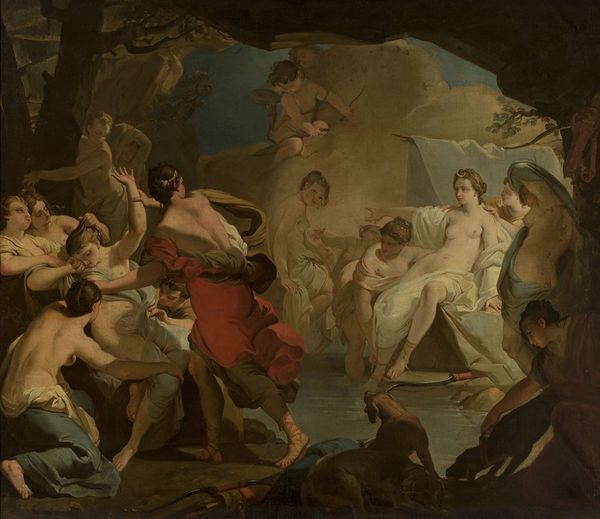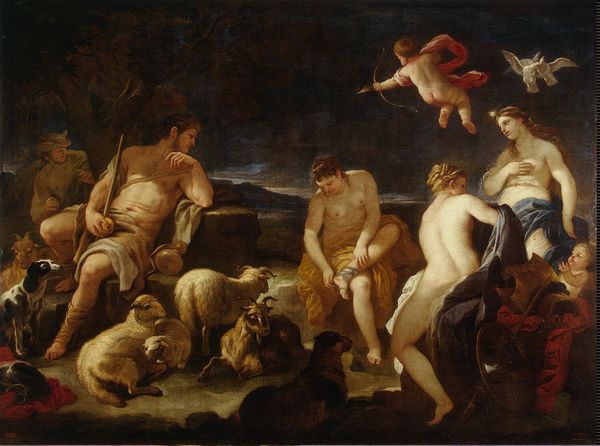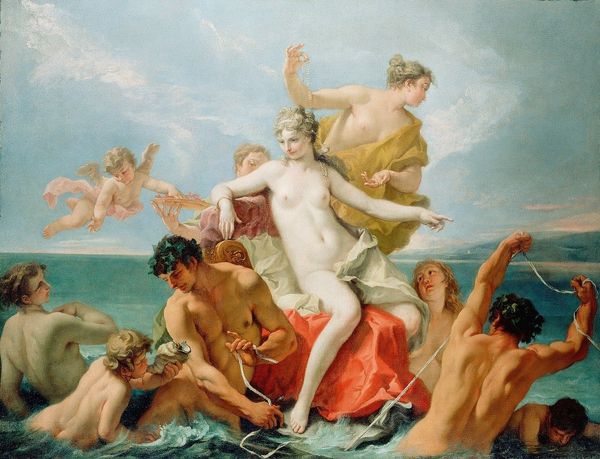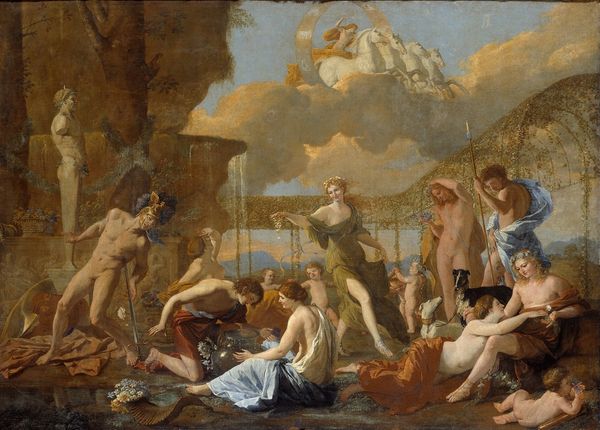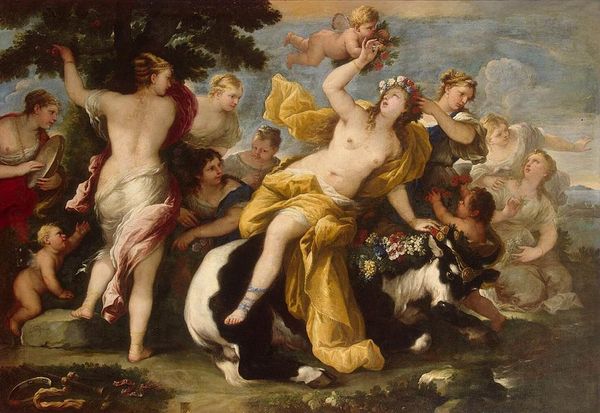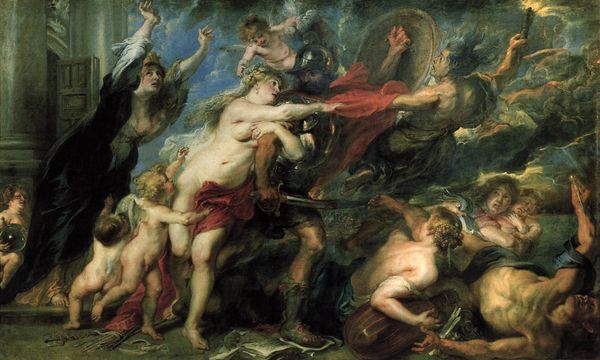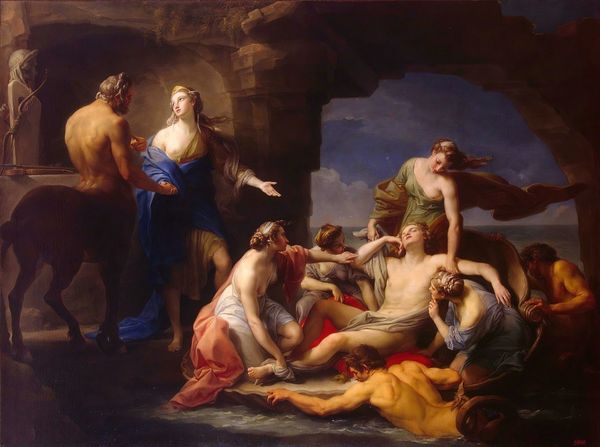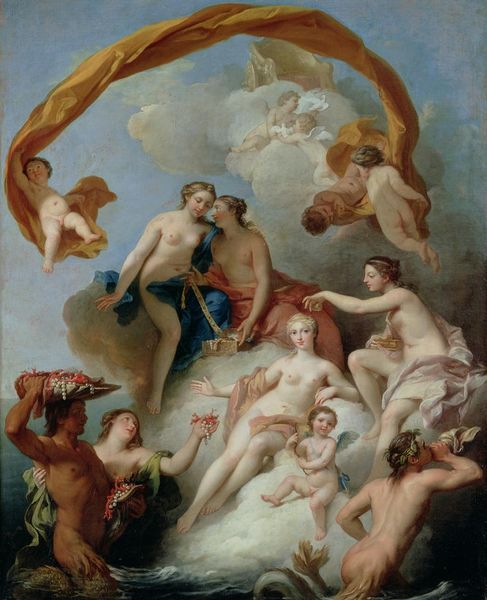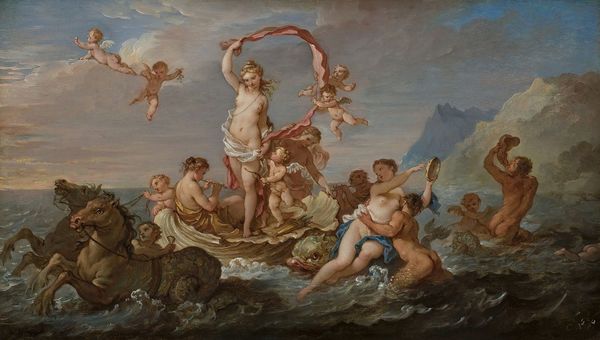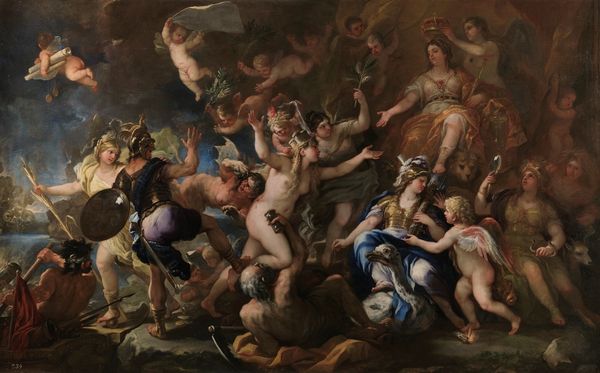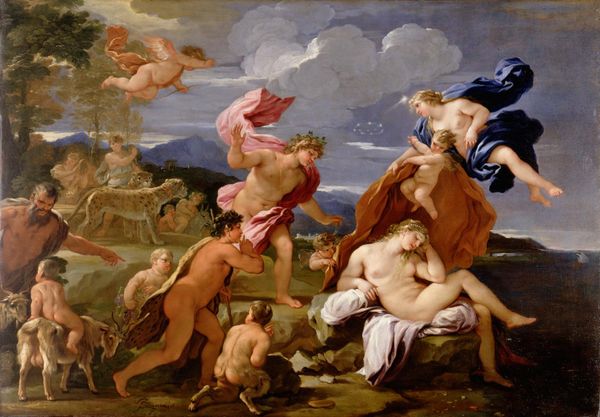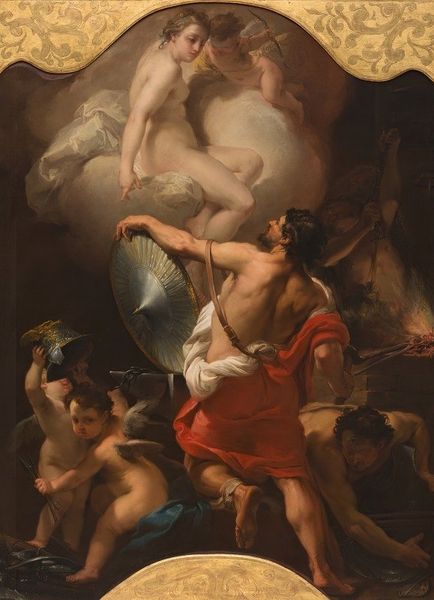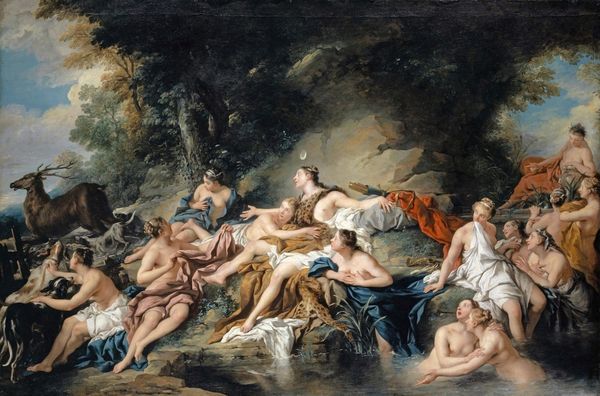
painting
#
allegory
#
baroque
#
painting
#
figuration
#
mythology
#
history-painting
#
academic-art
#
italian-renaissance
#
nude
Copyright: Public Domain: Artvee
Editor: We're looking at Gaetano Gandolfi's painting *Diana and Callisto*. The scene is just so charged! So many figures, so much tension… It really evokes a sense of drama. How do you interpret this work? Curator: It’s interesting you pick up on the tension. Consider the symbols here. Diana, the Roman goddess, represents chastity, yet the scene depicts the exposure of Callisto’s pregnancy—a blatant betrayal of Diana's values. What does that tension, that break from societal norms, suggest to you about Gandolfi's intended message? Editor: Hmm, is he pointing to hypocrisy, perhaps? Or maybe just the challenges of adhering to such strict ideals? I'm seeing this in Diana's seemingly indifferent, regal pose, juxtaposed with the frantic gestures of the nymphs surrounding Callisto. Curator: Precisely. Gandolfi utilizes recognizable classical iconography—Diana's crescent moon, the hunting dogs—but places them within a narrative of unveiled truth. Notice the gestures; they echo theatrical conventions, amplifying the emotional impact. Could Gandolfi be suggesting the performative nature of morality itself? Editor: That's a fascinating way to look at it. The scene becomes less about the literal story and more about the underlying performance of virtue. I also see how the landscape kind of isolates them; are these secluded grottoes typically a visual signifier related to revealing something? Curator: Grottoes often symbolize hidden knowledge or a space of transformation, and their popularity was increasing rapidly. They echo a separation between nature and a type of emotional purity which Diana represented, and challenge ideas of nature’s purity, or our own understanding. Perhaps reflecting on how myths resonate throughout history can illuminate contemporary perspectives on gender, power, and truth. Editor: I never thought of it like that. Looking at it through the lens of symbolism adds a whole new layer of meaning. I will now know how to view similar images of classical themes and how to interpret these kinds of works from now on. Curator: Indeed. The continued impact of these narratives stems from the enduring human struggle with ideals and realities, and Gandolfi gives it such theatrical panache.
Comments
No comments
Be the first to comment and join the conversation on the ultimate creative platform.
